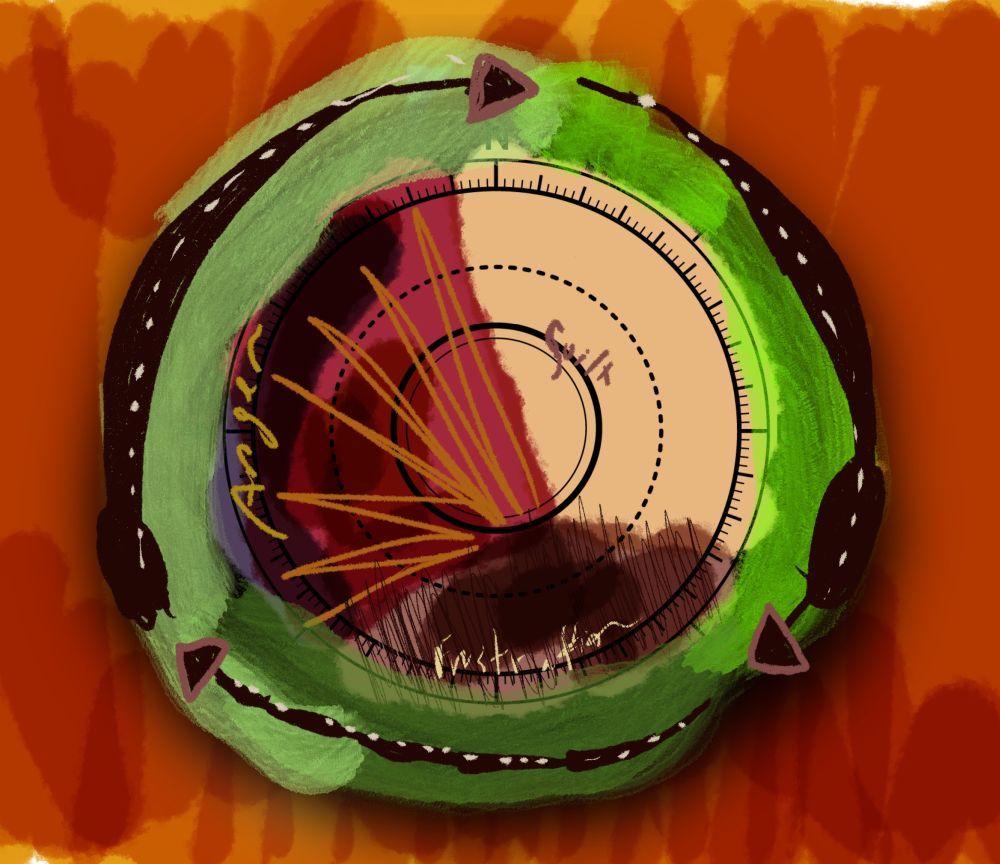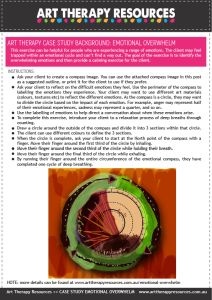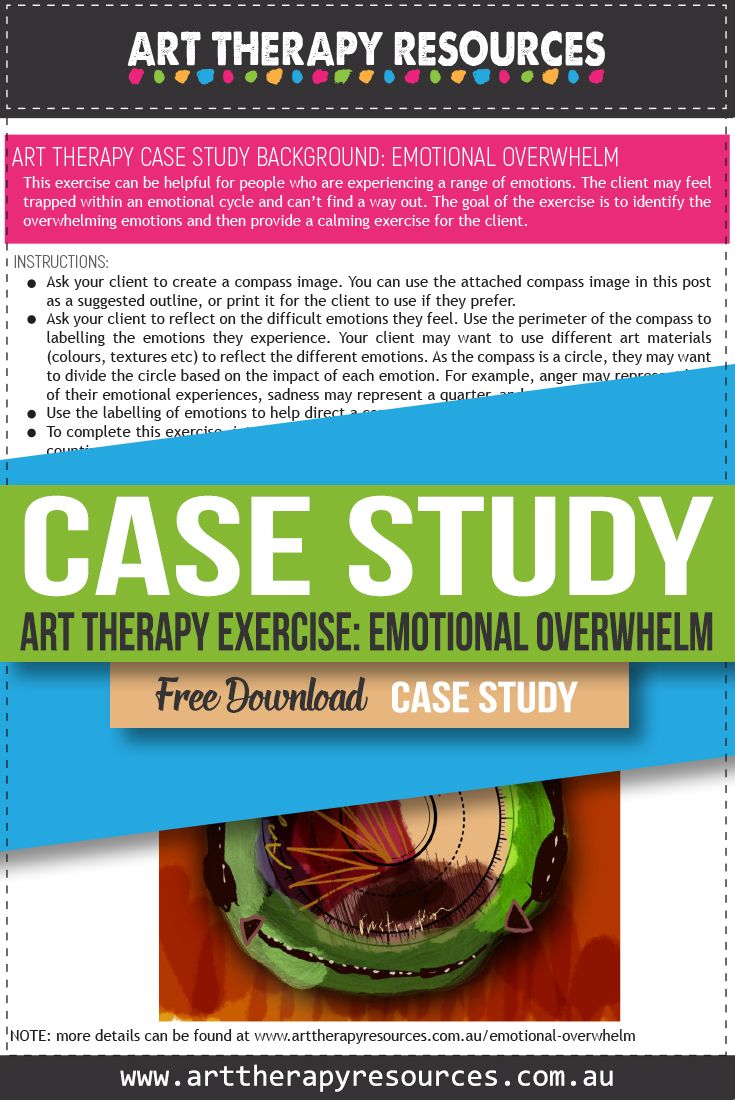THIS POST INCLUDES:
- Art Therapy and Emotions
- About the Client
- Art Therapy Exercise
- Client Insight and Outcomes
- Disclaimer
- FREE DOWNLOAD Art Therapy Exercise
ART THERAPY AND EMOTIONS
Emotions are an integral part of our experience as a person. They have many benefits and enable us to connect with other people, however, they can also negatively impact us if we are unable to regulate our emotions.
Emotions can be powerful. They can cause us to lash out in anger or experience levels of joy that make our hearts burst. Our emotions can sometimes initiate extreme behaviours that are based on the emotions we are feeling.
To mitigate potential extreme behaviours, we try and regulate our emotions. An example of this is seeing an upset child who is crying uncontrollably over a small incident. We try and help the child regulate their emotion so they can understand the situation is not as bad as they thought. We also want the child to regulate their emotion so they don’t become overwhelmed by their experience of emotion and become even more upset.
Historically, emotions have often been viewed as problematic and seen as a disruptive force within a person’s life. However, over time, we have to realise the importance of our emotions and the information that they give us. Our emotions have helped us to develop our personality, understand important developmental experiences, as well as connect socially with others. If we can learn to experience emotions and express them in healthy ways, we can use them to enhance our experiences.
WHAT IS EMOTIONAL OVERWHELM
Emotional overwhelm is not specifically a diagnosis, however, it can accurately describe how people feel during periods of their lives.
Emotional overwhelm is typically experienced over a longer duration than a single incident of feeling intense emotions. An overwhelming feeling of emotions can affect your ability to think and carry out your daily tasks.
Emotional overwhelm is best described as an ability to manage your emotions. Your emotions become the driving force behind your thoughts and actions and you may feel unable to control them.
Some symptoms of emotional overwhelm include:
- Extreme emotional reactions to small situations. Eg. Intense feelings of anger over breaking a mug
- You’re unable to focus or complete routine tasks without feeling overwhelmed
- You feel more disconnected from family and friends
- Your physical wellbeing suffers
- Most day to day activities feel immense and may trigger intense emotions
The cause of emotional overwhelm is different for everyone and may relate to enduring or acute stress events. It may also be a result of traumatic experiences that lay hidden beneath your conscious level of emotional understanding.
IMPACT OF EMOTIONAL OVERWHELM
Emotional overwhelm may conjure images of outbursts and out of control behaviours, however, it’s important to remember that emotions can present differently in people.
Emotional overwhelm can also be present in people who have endured many months of an extremely stressful situation. Over this time, the person may be suffering from poor sleep, lack of social supports, and not eating properly to sustain their energy. This can compound the problem of emotional overwhelm.
If this continues over a long period of time, a person’s physical health can be impacted and manifest as fatigue, chronic pain, and ongoing immunity issues such as constantly catching colds and feeling run down.
HOW ART THERAPY CAN HELP WITH EMOTIONAL OVERWHELM
Art therapy plays an integral part in processing emotional experiences. This includes emotions that are visible and self-evident as well as those that are suppressed or hidden as a coping mechanism.
Processing emotions can be straight forward when a client is aware of their emotional experiences and can identify how their thoughts, behaviours, and emotions are interconnected. This awareness can help facilitate clients explore and process their emotions, as well as develop effective strategies for acknowledging and utilising their emotions in the future.
For those who resist an emotional experience through conscious or unconscious methods, the ability to process emotions can feel difficult and uncertain. Emotions can often make us feel unsure and uncertain about our ability to cope or manage a situation.
Art therapy can help clients connect with these feelings in a safe and contained space. Often this contained space is represented by a canvas or art journal and paper that can provide a space to explore the uncertainty.
Art therapy can help explore difficult emotions through:
- Understanding the cause of specific emotions
- Understanding the connection between emotions and physical feelings
- Develop methods to self-regulate emotions through art
- Identify contributing factors that exacerbate difficult emotions
- Provide an outlet for emotional expression
- Create symbols and metaphors to help explore emotions outside of verbal communication
Expressing Emotions using a 6 step process as described by the blog Creativity in Therapy is a quick process of helping clients to delve into emotional expression through art.
The process is summarised below:
- Scribble warm up (2-5 min)
- Happiness (5 min)
- Anger (5 min)
- Anxiety or fear (5 min)
- Sadness or depression (5 min)
- How you feel today (10-15min)
These quick exercises form part of an emotional expressive process that facilitates a simplified process for clients to engage in art making without overthinking the art making process or how their emotions can be justified.
Working with emotions can be physically and mentally demanding. As an art therapist, it’s important to keep in mind that working with clients and their emotions should follow some basic principles:
- Established trust between client and therapist so the client feels safe to explore their emotions
- A basic level of psychoeducation about emotions that ensures the client understand that emotions are normal and vital to our functioning as a human
- Ensure there is enough time in the session for the client to undertake any art activities for emotional expression and the ability to reintegrate before the session is completed
ABOUT THE CLIENT
- Name: Arjun
- Age: 28
CURRENT CLIENT ISSUES:
Arjun has recently immigrated as part of a refugee program. Arjun was provided with access to art therapy group sessions as part of a refugee program. Arjun was feeling a mix of emotions from relief to being accepted into his new country, guilt from leaving his family behind, frustration at the lengthy process that his application took, and anger towards some of the abuse he saw in his journey.
Whenever Arjun feels an emotion about his experience, he tries to think about something else, and then feels another wave of difficult emotions about other experiences. Arjun feels he is in a cycle of overwhelming emotions and cannot stop the cycle. Arjun wants to focus on the future, but he feels conflicted by everything that he has experienced.
ART THERAPY EXERCISE
This exercise can be helpful for people who are experiencing a range of emotions. The client may feel trapped within an emotional cycle and can’t find a way out. The goal of the exercise is to identify the overwhelming emotions and then provide a calming exercise for the client.
INSTRUCTIONS:
- Ask your client to create a compass image. You can use the attached compass image in this post as a suggested outline, or print it for the client to use if they prefer.
- Ask your client to reflect on the difficult emotions they feel. Use the perimeter of the compass to labelling the emotions they experience. Your client may want to use different art materials (colours, textures etc) to reflect the different emotions. As the compass is a circle, they may want to divide the circle based on the impact of each emotion. For example, anger may represent half of their emotional experiences, sadness may represent a quarter, and so on.
- Use the labelling of emotions to help direct a conversation about when these emotions arise.
- To complete this exercise, introduce your client to a relaxation process of deep breaths through counting.
- Draw a circle around the outside of the compass and divide it into 3 sections within that circle. The client can use different colours to define the 3 sections.
- When the circle is complete, ask your client to start at the North point of the compass with a finger. Move their finger around the first third of the circle by inhaling.
- Move their finger around the second third of the circle while holding their breath.
- Move their finger around the final third of the circle while exhaling.
- By running their finger around the entire circumference of the emotional compass, they have completed one cycle of deep breathing.
CLIENT INSIGHT AND OUTCOMES
Arjun could see a benefit for labelling his emotions. During the times when he was feeling overwhelmed, he would often feel out of control with emotion and did not know how to stop the compounding emotions. After labelling the emotions he felt more understanding of his emotions and could see how they were a natural expression.
Arjun tried the deep breathing exercise and felt he needed a few cycles around the compass to completely relax. He felt by using the compass that represented his emotional pain, he could turn the compass into a tool for relaxation and as a method of overcoming the emotional cycle.

DISCLAIMER
This case study represents a snapshot of the client’s progress in treatment. The exercise in this article could be used as written or as a guide for new and original tasks developed by the Art Therapist. Responsibility for treatment resides with the individual therapist who understands their clients specific needs. The art therapy exercise should not be viewed as a pre-defined directive on how to treat a client that presents with a specific range of problems.This art therapy exercise will help build a database of knowledge to draw upon when helping your client. Art Therapy is associated with psychotherapy techniques, however each therapist often approaches therapy with their own foundation of psychological interventions, whether it be psychotherapy, CBT, DBT or other methods.
FREE DOWNLOAD: Art Therapy Exercise
Download the FREE Art Therapy Exercise based on the above Case Study. The free download includes instructions for the art therapy exercise, along with an example of the art therapy exercise.

BUILD YOUR ART THERAPY REFERENCE MATERIALS:
Pin this image to your Pinterest board.

SHARE KNOWLEDGE & PASS IT ON:
If you’ve enjoyed this post, please share it on Facebook, Twitter, Pinterest. Thank you!
